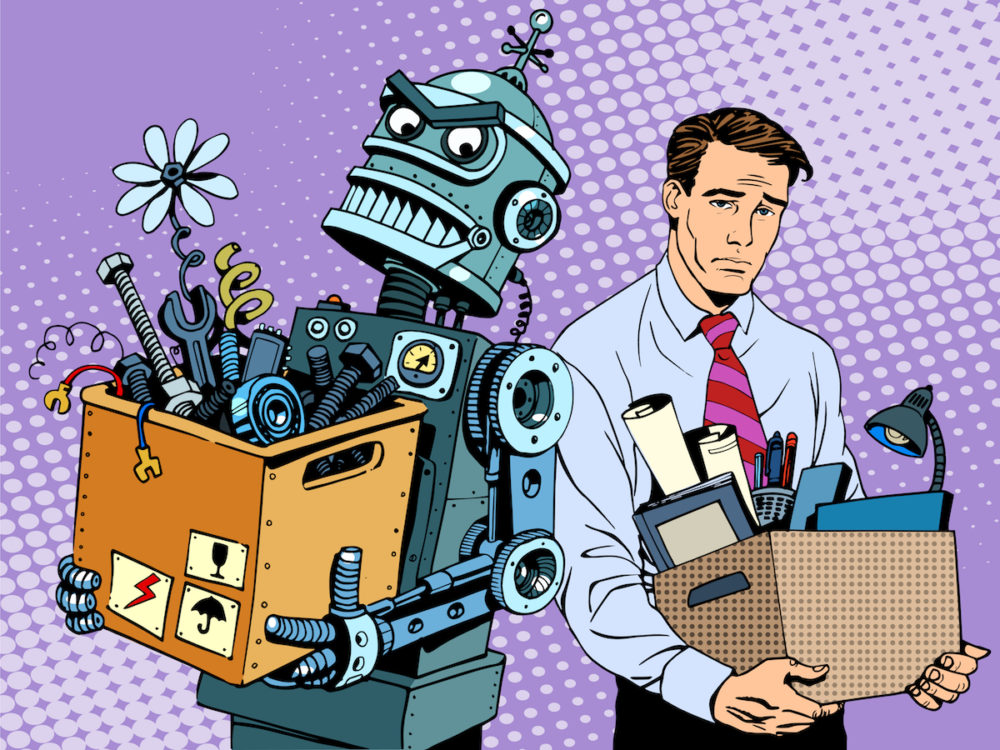This is the third in a series of articles exploring a delivery bot pilot program that was rolled out in D.C. last month.
It has been a tumultuous and passionate few weeks here in the nation’s capital, so you could be forgiven if you didn’t notice the other day that an autonomous food delivery bot made its first trial run in the District.
Quiet, white, unobtrusive and below the line of sight, it whirred along at about four miles per hour, using nine cameras and a GPS to navigate around obstacles. Most remarkably, it did so on its own — not requiring human assistance.
Seemingly minor, this event did not receive widespread attention. But while the food delivery bots are still in the trial phase, they are part of what many think of as a new era for the delivery sector. This era is marked by autonomous technology — from autonomous delivery drones to self-driving cars — that some see as a threat to human jobs.
History déjà vu
If the “robots-stealing-human-jobs” narrative sounds familiar, that’s because it’s been with us for some time.
We can trace these anxieties back to at least the Industrial Revolution, a period during which there was considerable anxiety around the prospect of machines taking human jobs or allowing lower-skilled workers to perform jobs previously restricted to higher-skilled workers. Famously, a number of textile laborers and weavers in Britain, nicknamed Luddites, smashed textile machines across the English countryside from 1811 to 1812 in response to what they saw as a threat to trained textile workers’ and weavers’ jobs. The violence was eventually quelled, but the anxiety didn’t stop.
Concern about machines taking human jobs cropped up time and time again throughout 20th century — with the New York Times referring to it as an “old worry” by the 1940s and President John F. Kennedy stating in 1962 that the “major domestic challenge of the 1960s” was “to maintain full employment at a time when automation, of course, is replacing men.”

So what’s new about this round of robot anxiety?
We now find ourselves in the midst of another panic. A study in 2013 garnered widespread attention when it demonstrated that 47 percent of all jobs held by Americans are at high risk of automation.
The risk for job automation varies across the nation, and D.C. looks set to be less affected than other areas — at least in the near term. According to a report put out by Oxford University and Citi, D.C. is tied with Boston as the U.S. city with the lowest percentage — 38 percent — of jobs considered to be at “high-risk” of automation. (Compare this with Las Vegas and Fresno, which lead the nation with 49 percent and 54 percent of jobs, respectively, at “high-risk” of automation. Sorry, blackjack dealers.)
Why is this? The answer might be easy to guess: Washington, D.C., with its substantial number of federal employees, attracts highly skilled workers whose jobs are less likely to be automated. In addition, the region doesn’t have a major manufacturing industry, making it less vulnerable to the job losses through automation often seen in that sector.
But how worried should the rest of the U.S. be?
Keep calm and review history
A group of Deloitte economists who studied employments trends from the past 144 years found that technology has, in fact, created more jobs than it has destroyed. After studying Census records and other employment data from the past century and a half, they noted: “The last 144 years demonstrate that when a machine replaces a human the result, paradoxically, is faster growth and, in time, rising employment.”
They found that technology innovations have led to greater disposable incomes and lowered cost of essentials, as well as an increase in employment in what they call “knowledge-intensive sectors,” such as medicine, accounting and professional services.
Why then, do we so often assume the worst with the genesis of each new disruptive technology? One reason could be that the initial technological unemployment, or job loss caused by technological advancements, is a lot easier to notice than the subsequent increase in jobs that result.
In addition, technological unemployment is a very real concern. The authors of the study recommend that special care be taken by policymakers to shape policy around improving training and education for those affected by technological unemployment.
D.C.’s unique role as a policy trendsetter
As one of the first cities to have legalized the operation of autonomous cars and delivery bots on its streets, D.C.’s local city government could serve as a policy trendsetter in this automation era.
How? As we transition to a world of increased automation — and as D.C. feels some of the economic effects of this shift — local government has the opportunity to put policy in place to improve training and education for individuals who are experiencing or could soon experience technological unemployment. And indeed it is fitting that, as the nation looks to Washington, D.C., to set federal policy, individual cities across the country can also look to D.C.’s local city council as an example as we navigate this new era.







